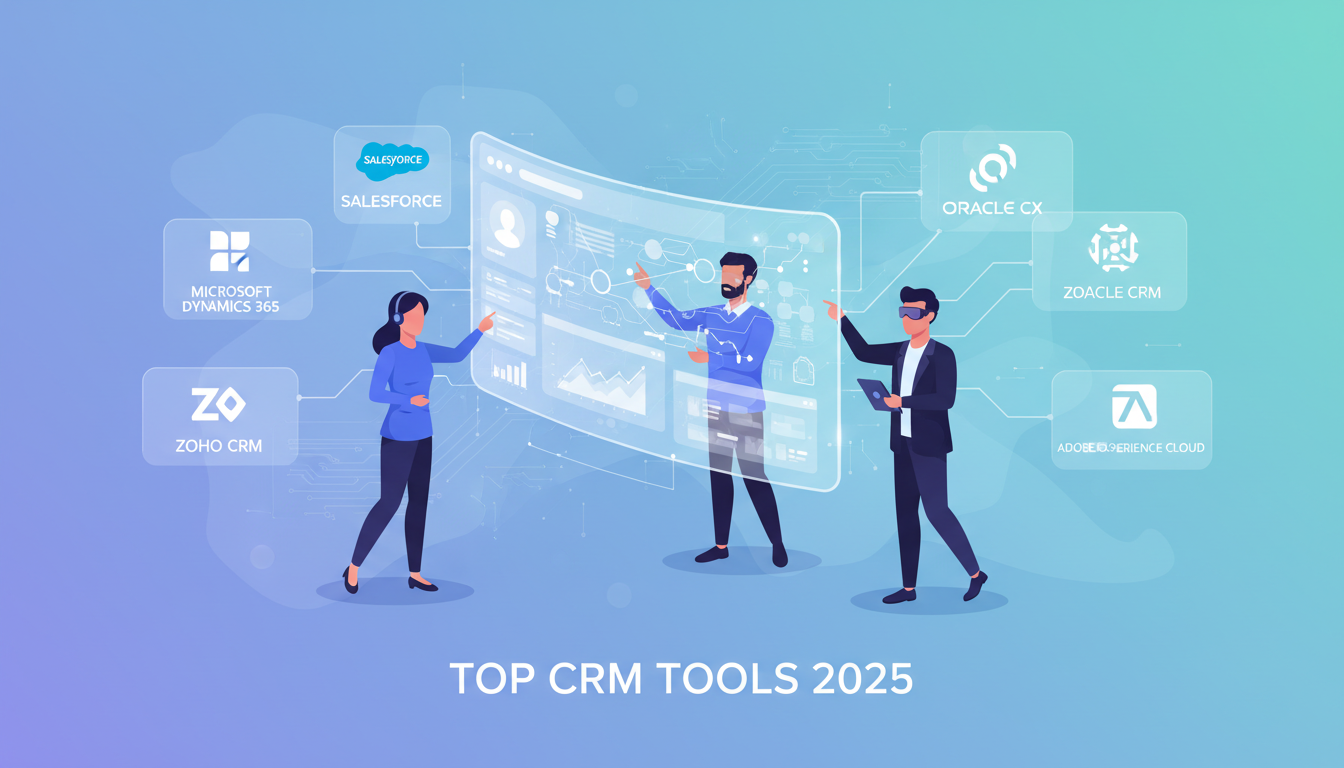Choosing software tools is a critical decision for professionals seeking to improve productivity in 2024. This article offers a curated selection of the top software tools to streamline your project management and development workflows. Discover a mixture of platforms and solutions that cater to your specific needs without the trial-and-error hassle.
-
The diversity of productivity software tools includes project management platforms such as ClickUp, Agile solutions like Jira, and IDEs like Visual Studio Code, offering tailored features to enhance team collaboration, development efficiency, and project tracking.
-
Advanced resource management tools, smart integration capabilities with other systems, and workflow automation software contribute to the optimization of project management by enabling efficient resource allocation, streamlined processes, and the elimination of redundant manual tasks.
-
Transitioning to new software tools involves careful consideration of user-friendliness, industry-specific requirements, customer ratings, pricing models, and the learning curve involved, with emphasis on smooth integration, training, and change management to ensure successful adoption.
Do you want to find the perfect software agency for your brand but don't know where to start? Begin with discovering the Best Software Companies, see the details of Best Software Companies in New York.
Exploring the Landscape of Software Tools
The landscape of software development tools is marked by an impressive diversity. Best software development tools have evolved significantly over the years, driven by the demand for enhanced capabilities. From best project management tools like ProofHub to time-tracking tools like Toggl and collaboration tools like Asana and Slack, the array of tools available today is truly staggering.
For software developers, these tools are invaluable, boosting productivity, streamlining resource utilization, and promoting better communication and collaboration. Additionally, the current trends in productivity software development tools encompass integrated development environments (IDEs), low-code/no-code development platforms, and DevOps and continuous integration. Keyboard shortcuts and other user-friendly features are being implemented to minimize obstacles for users, making these tools even more appealing.
Yet, the task of selecting the right development tool can present some challenges. It requires a clear understanding of one’s needs and the specific challenges that the tool is designed to address. Regardless of whether you’re a seasoned developer or a novice dipping your toes into the world of software development, the right tool can make the difference between a project’s success and failure.

Do you want to learn more about software tools? Discover the Best Website Builder Software Tools to Build a Website.
Essential Project Management Software
Serving as the heart of any project, good project management software provides the vital structure and clarity needed for effective project management. These project management tools come equipped with key features such as:
-
Planning and scheduling
-
Collaboration
-
Documentation
-
Reporting
-
Task management
-
Communication
-
Resource management
-
Time and budget management
But what makes a good project management tool stand out from the crowd?
One such example is ClickUp, recognized as one of the top project management tool options for 2024. With its competitive pricing plans, extensive features, and flexibility for customization, ClickUp has earned its place as a trusted project management tool for many project managers. But the landscape of project management software is not limited to a single solution.
Agile Project Management Solutions
Agile solutions have established a unique niche within project management. Defined by:
-
Progress visualization
-
Issue tracking
-
Collaboration
-
Estimation
-
Continuous adaptation
-
Transparency
-
Listening capability
Agile project management tools differ from traditional tools by being more responsive to changing customer needs and prioritizing results over strict adherence to form and planning.
Examples of top-rated Agile Project Management tools include:
-
monday.com
-
QuickBase
-
Loom
-
Jira Software
-
Nifty
-
ProofHub
-
Asana
-
Smartsheet
These tools foster adaptability and generate high-quality results through iterative and adaptive methods, while accommodating a range of work delivery approaches such as Gantt charts.
Despite their benefits, Agile project management solutions are not devoid of drawbacks, such as possible neglect of documentation and the need for significant time investment and commitment from team members.
Gantt Chart Generators
As a staple of project management, Gantt charts visually represent a project’s timeline, enabling project managers and teams to oversee and prioritize tasks effectively. There are numerous Gantt chart generators available in the market that offer a range of features such as:
-
Task and milestone creation
-
Dependency management
-
Resource allocation
-
Diverse visuality options
-
Comprehensive customization
Some of the top-rated Gantt chart generators include:
-
monday.com
-
ClickUp
-
Instagantt
-
Smartsheet
-
Microsoft Project
-
TeamGantt
These tools are particularly beneficial for their robust features and user-friendly interfaces, making the task of managing complex and multiple projects much more manageable.

Integrated Development Environments (IDEs) for Developers
In contrast to the overall project organization provided by project management tools, software developers rely on Integrated Development Environments (IDEs) as their powerhouses for daily coding tasks. These tools enhance productivity by reducing development time, enforcing coding standards, and offering intelligent features such as code completion.
IDEs come in two main categories: cloud-based and desktop IDEs, each with its own set of benefits and drawbacks.
Cloud-Based IDEs
Software development enters the virtual realm with cloud-based IDEs. These web-based platforms, which include:
-
AWS Cloud9
-
Google Cloud Shell Editor
-
Microsoft Azure Notebooks
-
Codeanywhere
-
Repl.it
allow developers to write, run, and debug code within a web browser, offering the flexibility for development from any location with internet connectivity.
Their ability to facilitate simultaneous collaboration among multiple developers, irrespective of their geographical locations, is perhaps their biggest advantage. However, these tools also have their drawbacks, including limited customization compared to local IDEs.
Desktop IDEs for Maximum Performance
Conversely, desktop IDEs like IntelliJ Idea and Visual Studio Code offer robust, locally-installed solutions that utilize the device’s resources for potential performance enhancement and offline accessibility.
While these IDEs typically provide quicker and more responsive experiences, their resource-intensive nature and potential steep learning curve are considered drawbacks. However, these tools have the edge in terms of performance, offering a more stable and responsive environment for coding.

Task Management Tools to Keep You Organized
In project management, the saying “a place for everything and everything in its place” holds true. Task management tools are essential in maintaining order. By offering a visual depiction of the work that requires attention, these tools enable team members to conveniently monitor and prioritize tasks. Some popular task management tools include:
-
Trello
-
Asana
-
Monday.com
-
Jira
-
Basecamp
Using a project management app can greatly improve the efficiency and organization of your project management process.
Two key components of task management tools are visual task boards and to-do list apps. Visual task boards offer a clear view of ongoing tasks and their progress, while to-do list apps help in the organization of tasks, ensuring nothing falls through the cracks.
Visual Task Boards
Popular options like Trello and Casual fall under visual task boards, offering a graphical representation of tasks, which assists in efficient tracking and prioritization. Visual representation of tasks enhances clarity and understanding among team members, promoting better collaboration and communication.
When evaluating a visual task board, one should consider features such as:
-
Cards representing tasks
-
Lanes for sorting tasks
-
A user-friendly drag-and-drop interface
-
Advanced filtering and search capabilities
-
Comprehensive project management tools
To-Do List Apps
Conversely, to-do list apps such as Todoist, TickTick, and Microsoft To Do prioritize simplicity and effectiveness. They enhance task organization through features such as easy sorting and prioritization of tasks, drag and drop functionality, custom tags for tracking priority, and setting up recurring tasks.
When evaluating a to-do list application, one should consider features like:
-
Task reordering functionality
-
Task prioritization
-
Support for maintaining work-life balance
-
Seamless integration with other tools
-
Robust team management capabilities

Resource Management Tools for Optimal Allocation
Another cornerstone of effective project management lies in resource management tools. They cover aspects such as resource planning, allocation, and tracking, ensuring appropriate assignment of resources to tasks and adequate resource availability for project objectives.
These tools enhance resource allocation by empowering teams to maintain adaptability and generate high-quality results through iterative and adaptive methods, while also accommodating a range of work delivery approaches such as Gantt charts. Ultimately, the right source management tool can lead to heightened productivity, customer satisfaction, and predictability.

Collaboration Tools That Drive Teamwork
Given our interconnected world, the importance of effective collaboration can’t be overstated. Collaboration tools like:
-
ClickUp
-
Slack
-
Google Workspace
-
Zoom
not only facilitate easier and more efficient interactions between team members and project managers but also enhance pre-existing communication channels, fostering the development of enhanced communication skills within the team.
By integrating these tools into project management, benefits such as:
-
Improved change management
-
Time savings
-
Effective problem-solving
-
Knowledge sharing
-
Innovative idea generation
-
Enhanced efficiency and productivity
-
Better time management
-
Improved remote team collaboration
-
Streamlined project management processes
can be achieved.
Prominent collaboration tools widely acknowledged for fostering effective teamwork include:
-
ClickUp
-
Slack
-
Google Workspace
-
Zoom
-
Figma
-
Hugo
-
Asana
-
Trello
-
Miro
-
Notion
These tools not only help in managing projects effectively but also in fostering a culture of collaboration and teamwork.

Time Tracking Tools for Accurate Billing and Productivity
Particularly for billing and productivity measurement within project management, time tracking tools such as Clockify and Scoro play a significant role. They facilitate the collection and analysis of insights, provide access to reports from any device, replace traditional paper timesheets, and prevent wastage of money and resources.
When selecting a time tracking tool, it’s important to consider features like:
-
Enhanced productivity
-
Accurate billing
-
Improved project management
-
Realistic time estimates
-
Data-driven analytics and reports
-
Mobile access
-
Location tracking
-
DCAA compliance
-
Workforce time clock
-
QuickBooks integration
-
Leave management
-
Payroll management
These tools can be seamlessly integrated into existing software systems, leveraging open APIs and standards to avoid compatibility issues. This integration allows for streamlined processes, accurate data tracking, and enhanced efficiency.

Programming Languages Support and Tools
Considering the supported programming languages of software tools is a key aspect in the realm of software development. In 2024, JavaScript and Python stand out as widely used programming languages.
Software tools like Visual Studio Code, Eclipse, and Sublime Text are recognized as some of the best software development tools for their comprehensive support of various programming languages, allowing for versatility in numerous development projects. This support is crucial for software developers, as it allows them to work in a language they are comfortable with while still enjoying the benefits of a robust software development tool. In addition to these, other software programming tools are also available to cater to the diverse needs of developers.

Workflow Automation for Streamlined Processes
Workflow automation has transformed our work approach by enabling process streamlining and routine task automation. This process enables the creation of intricate workflows with multiple steps and decision points, ultimately leading to time savings, error reduction, and improved overall efficiency.
Workflow automation tools like:
-
Pneumatic
-
Quixy
-
Kissflow Workflow
-
Pipefy
-
Trello
-
Asana
-
Zapier
-
ClickUp
-
Nintex
-
monday.com
-
Integrify
-
Jotform
-
SysAid
have made it possible to automate processes, eliminating manual tasks, and improving overall efficiency.
These tools play a critical role in creating efficient, streamlined work environments, resulting in a smooth data flow throughout the systems, elimination of redundancies, and maximization of the value of existing software assets.

Customizable Software Development Tools
When selecting a best software development tool, customizability is a major consideration. Customizable software development tools offer:
-
Flexibility to accommodate future requests
-
Capability to implement changes and include crucial information
-
Opportunity to develop solutions that align perfectly with business requirements
When it comes to customization, software tools can be modified to:
-
expedite development
-
automate processes
-
cater to specific challenges and requirements
-
enhance the software development process by incorporating tools for version control, project management, and code.
However, the level of customization in software development tools is influenced by various factors including:
-
the target platforms
-
the complexity of software features
-
user preferences
-
the level of customization required.

Project Management Apps for On-the-Go Access
With the pace of today’s world, managing projects on-the-go has become a necessity. That’s where project management apps come in. These apps, like:
-
ClickUp
-
Asana
-
Jira
-
Trello
-
Monday.com
-
Smartsheet
Offer the flexibility to manage projects and ensure efficient project management from any location with internet connectivity.
By allowing users to view and update project documents, monitor task assignments and progress, and also collaborate through comments and notifications on their mobile devices, these apps make project management truly mobile. They make use of cloud-based platforms to offer access to real-time project status updates, which can significantly enhance productivity and responsiveness.
While these mobile apps offer many benefits, like any tool, they also have their drawbacks, including potential costs, challenges in adaptation, and vulnerabilities. However, with the right strategy and careful selection, these apps can significantly enhance project management effectiveness.

Learning Curve and User-Friendly Interfaces
The adaptation to a new software tool frequently involves a learning curve. The learning curve of software tools is affected by the investment of time and effort needed to grasp new technologies, programming languages, and the intricacy of the tools. However, user-friendly interfaces can simplify the adoption process and enable users to learn and achieve results faster.
A user-friendly software tool interface is characterized by:
-
Visual appeal
-
Cleanliness
-
Intuitiveness
-
Drag-and-drop functionality
-
Streamlined workflows
-
Adherence to standards
-
Convenient access to essential information
To ease the learning curve, software tools:
-
Introduce fundamental concepts
-
Leverage familiar tools
-
Offer resources and support systems, such as tutorials and templates aligned with the Learning and Change Curve model.

Free Project Management Software Options
For those mindful of their budget, a plethora of free project management software options are available. Trello, Notion, and Teamwork are among the leading free and best project management software tools in the market.
While free project management software tools like Trello, Asana, ClickUp, Wrike, and nTask do offer certain premium features, they generally lack improved features and customer support in comparison to their paid counterparts.
However, it’s important to consider the potential drawbacks of using free project management software. These drawbacks include:
-
Potential costs
-
Challenges in adaptation
-
Vulnerability
-
Increased complexity
-
Software dependency
-
A steep learning curve

Advanced Features in Premium Software Tools
Those in search of more comprehensive features will find a wealth of advanced functionalities in premium software tools. These advanced features offer a wide range of benefits such as:
-
Enhanced project planning and scheduling
-
Improved collaboration
-
Remote working capabilities
-
Efficient task delegation
-
Simplified file access and sharing
Advanced features in premium software tools stand out by providing enhanced support for complex functionalities like 3D modeling, advanced rigging, and effects, which extend the capabilities of the tool beyond what basic feature sets offer.
Some of the enhanced features found in premium software tools include advanced planning and cross-functional work tracking in Jira Premium. In the eDiscovery tools space, notable improved features include indexing, conversation threading, analytics, and predictive coding.

Customer Ratings and Reviews
Customer ratings and reviews hold a crucial role in decision-making in this digital age. They offer valuable insights into the usability and capabilities of software products, enabling users to make well-informed decisions when selecting tools.
Reputable sources for customer ratings and reviews on software tools include:
-
TrustRadius
-
Google Business Profile (GBP)
-
Yelp
-
Tripadvisor
-
Review management software like Yotpo
Customer ratings for software tools on popular review sites are generated through surveys, analysis of user feedback, and tracking metrics such as Net Promoter Score (NPS) and Customer Satisfaction scores. Therefore, customer reviews can be considered trustworthy as they provide firsthand user experiences and insights into the functionality and features of software tools.

The Best Software Tools for Specific Industries
As each industry has its unique needs, there are dedicated software tools designed to cater to these requirements. In the healthcare industry, there are several notable software tools like:
-
ChiroTouch
-
CounSol.com
-
Mend
-
RXNT
-
SimplePractice
-
SimplyBook.me
-
TherapyNotes
In the construction industry, software tools such as Procore, Fieldwire, Archisnapper, Mosaic, and Building Information Modeling (BIM) software offer unique benefits. For the education sector, tools like nTask, Airtable, Asana, ClickUp, Evernote Teams, GanttPRO, and Flowlu are well-suited for coordinating educational projects and facilitating collaborative academic work.
The manufacturing sector also has its own set of tools, including inventory management software, ERP systems, and warehouse and manufacturing inventory management software. These tools are instrumental in optimizing operations and enhancing source management.

Comparing Per User Pricing Models
Many software tools adopt a per-user pricing model when it comes to pricing. This model involves a fixed fee per user, providing simplicity and predictability for budgeting, with the option of per month billed annually.
However, the per user pricing model also has its drawbacks. It can discourage adoption if only one person uses the software and it risks customer churn due to pricing based on the number of users.
Despite these drawbacks, Basecamp, Asana, Trello, and Monday are among the major software tool providers that offer per user pricing models.

Integration Capabilities with Other Systems
The effectiveness of software tools heavily relies on their integration capabilities. The integration capability in software denotes the software’s capacity to manage:
-
Interconnections
-
Interfaces
-
Relationships
-
Dependencies
with other systems.
By integrating software tools with other systems, benefits such as:
-
improved clarity in customer planning
-
continuous tracking
-
scheduling
-
resource management
can be achieved. These tools can be seamlessly integrated into existing software systems, leveraging open APIs and standards to avoid compatibility issues. This integration allows for streamlined processes, accurate data tracking, and enhanced efficiency.

Managing Projects Effectively with the Right Software
Choosing the right software tools can significantly impact the success of a project. Utilizing project management software can:
-
Streamline processes
-
Monitor project progress
-
Increase efficiency
-
Enhance team collaboration
-
Ultimately contribute to improved project outcomes.
Key features of project management software include:
-
Project planning and scheduling
-
Time tracking
-
Reporting and analytics
-
Automation
-
Resource management
These features contribute to effective task management and help manage tasks.
In addition, project management software, which serves as a project management system, facilitates communication and collaboration by offering a centralized platform for team members to access project information in real-time and collaborate with stakeholders.

Transitioning to New Software Tools
With the appropriate approach, the challenging process of transitioning to new software development tools can be effectively managed. Obstacles often encountered when transitioning software include misaligned expectations, data integrity issues, lack of preparedness among the project manager, and employees. These obstacles can be addressed by clear communication, alignment of expectations, conducting thorough data migration and testing, providing training and support, and implementing change management strategies.
The implementation of new software development tool in a company typically takes between 8 to 14 weeks, with the duration being influenced by resource availability and the complexity of the software being introduced.
In conclusion, the diverse landscape of software development tools available today offers a host of opportunities to enhance productivity and streamline workflows. From project management tools and IDEs to task management tools and time tracking software, these tools are designed to meet the unique needs of different industries and projects. Despite the learning curve and challenges associated with transitioning to new software development tools, the benefits of improved efficiency, collaboration, and project outcomes make the investment worthwhile.

Frequently Asked Questions
What are examples of software tools?
Examples of software tools include text editors, integrated development environments, and debugging tools. These are best software development tools that are commonly used in the industry.
What are basic software tools?
Basic software tools include a source code editor and a compiler or interpreter, with other tools like debuggers and profilers being used based on language, development methodology, and individual preference. These tools are used for different tasks in software development.
What are software application tools?
Software application tools are computer programs that help users perform specific tasks related to productivity, creativity, or communication. They are designed to assist end-users in accomplishing various personal, educational, and business functions.
What are system software tools?
System software tools are programs that manage computer resources and simplify applications programming, including operating systems, database management systems, networking software, translators, and utilities. This utility software helps to analyze, configure, optimize, and maintain the computer, such as virus protection.
Is Semrush paid tool?
Yes, Semrush is a paid tool, offering subscription-based plans with a free version limited option available.
"Turn your vision into a reality. Let Edvido match you with premier mobile app developers."
















